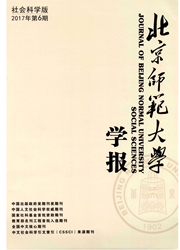

 中文摘要:
中文摘要:
自改革开放以来,我国中小学学校规模出现了不断扩大的趋势,这引发了学生上学成本上升等诸多问题。要遏制我国中小学规模不断扩大的趋势,首先必须要弄清其背后的主导因素。因为决定中小学学校规模变动的因素不同,控制中小学学校规模的方法也不一样。基于1980--2008年全国范围内的省级面板数据所进行的实证检验发现,总体而言,人口因素和教育政策制定者为追求学校规模优势而进行学校合并(简称政策因素),主导了改革开放以来我国中小学学校规模的变动,这一结论与既有文献一致;但与已有研究不同的是,实证结果还表明,人口因素和政策因素在不同时间段对我国中小学规模变动所起的作用存在较大差异。具体而言,在2001年之前,中小学学校规模的扩大更多的是由适龄人口变化所引起的;而在2001年之后,则主要是教育决策者追求学校规模优势而大幅减少学校机构数——“撤点并校”政策所导致的。同发达国家一样,过分追求学校规模优势也带来了诸多问题。因此,对仍在进行的中小学学校合并政策必须要有所调整。
 英文摘要:
英文摘要:
On the basis of theoretical analysis and hypothetical position, this article applies the provincial panel data model of the whole country to verifying the role of demographic and political factors of middle and primary school's scale alteration. The result shows that the scale expansion of middle and primary schools is due to the population changes before the year 2001 but after that year, the reason lies in some educational policymakers who excessively pursue the advantage of scale and cut down the number of educational institutions,. In other words, it is the educational police that has led the socalled "school removal and merger movement". Just like in many developed countries, those actions have also brought about a lot of problems. The article hence proposes a fundamental outline for adjusting the "school removal and merger" policy.
 同期刊论文项目
同期刊论文项目
 同项目期刊论文
同项目期刊论文
 期刊信息
期刊信息
